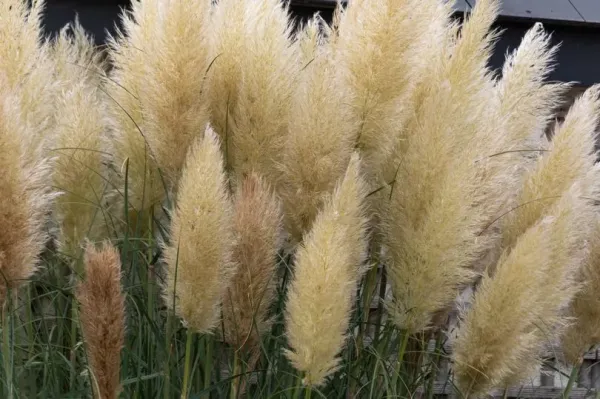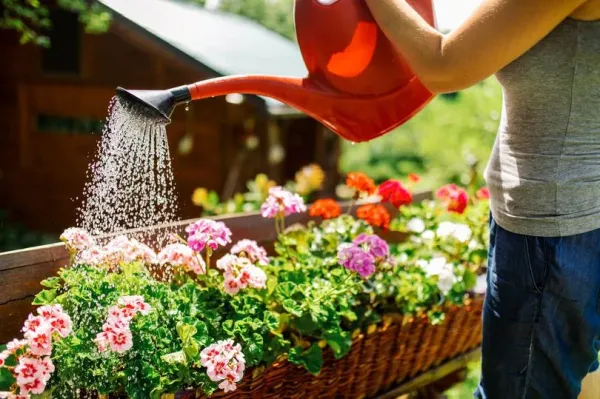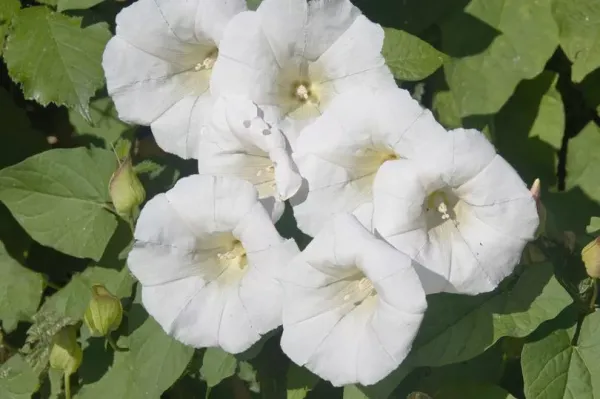Pampas grasses are having a moment. You’ll see them everywhere this year, in floristry, on Instagram, and in the garden itself – they’re a statement. Towering, dramatic, architectural. Behind that glamour is a plant that can, over time, become a problem.
In mature specimens, the centre of the plant may begin to die off. This happens to many flowering perennials in our borders. The outer ring keeps expanding and before long, you’re left with what looks like a doughnut: growth around the edges but rot and collapse at the heart.
The solution is often easy enough – to renew their vigour (and to increase the amount of plants you have) you divide them. But with pampas grass it’s more complicated. Once it reaches a certain size, it is extremely hard to manage. Each year’s growth sits atop the previous one, building an impenetrable tower of dead stems, thatch and tough fibrous roots.
The outer leaves remain sharp and vigorous, but the inner core turns into a thick, matted mulch that is not only unsightly but often rots in wet weather. When storms like Floris hit, whole heads of foliage can tear away, leaving the plant ragged and gaping. And while younger grasses bend and recover, older ones can split or collapse.
READ MORE: Homes with flowering perennials urged to carry out crucial task to ensure new blooms

I’m often asked whether these mature clumps can be lifted and divided. In theory, yes... but in practice, without heavy machinery or a team of strong helpers with saws and spades, it is extraordinarily difficult. The rootball can weigh hundreds of kilos and behaves more like solid wood. An extreme method is sometimes used – cutting back the foliage and setting fire to the plants innards.
This was once a common practice in large estates or farmland settings. The idea was to burn away the debris in the centre, clearing space for new growth in spring. But it can be dangerous. Pampas grass is highly flammable, especially in dry or windy conditions. A moment’s inattention can lead to fire spreading to fences, hedges and properties.
Unless you have a wide, safe space, and all the right precautions, it isn’t worth the risk. The best approach is to cut the plant back to the base in late winter, when it’s dormant and dry. Use shears or a hedge trimmer, wear gloves and long sleeves, and be ruthless. Once it’s cut back, inspect the crown. If the centre is too far gone – rotted or collapsed – it may be time to remove the plant and replace it with something younger and more manageable.
If the outer growth is healthy, you can sometimes lift and replant small sections, for a fresh start. If you’re thinking about introducing pampas grass into your garden, begin with one of the more refined, better-behaved cultivars. ‘Pumila’ is a compact variety growing to about 1.2m, ideal for smaller spaces and pots.

‘Evita’ has beautiful plumes with a tidy base, hardy and upright, reaching around 1.5m. If you have space, ‘Sunningdale Silver’ grows to over 2m with giant flowering heads, ideal for open gardens and bold schemes.
These grasses can be magnificent but they demand thought. They require space, commitment and sometimes, when the wind is howling and the foliage is shredding themselves to ribbons, a quiet moment of reflection on whether it might be time to begin again.
Jobs to do in the garden this week- Watering plants particularly those in pots or newly planted, is your main job when it’s hot and dry. Do so when it’s cooler in the morning or evening as otherwise you will lose a lot of water to evaporation.
- Water plants thoroughly – a little trickle will just evaporate off the surface. Move pots into shade if possible.
- You can increase your stock of border carnations by layering – choose a healthy side shoot that isn’t flowering, bend it over without snapping the stem and peg firmly into the ground with some wire. Cover the stem with soil and water in.
- Irises that have become congested can be divided to improve vigour.

- Lift them carefully to avoid damaging rhizomes and gently split apart to replant.
- Having trouble with earwigs on dahlias? Put traps with pots stuffed with shredded paper near them and remove earwigs daily.
- Prune climbing and rambling roses when they finish flowering.
- You can trim conifer and evergreen hedges as a final tidy up before autumn slows growth.
- Colchicum, sternbergia and autumn crocus can be planted out as soon as they are available to buy in the garden centre.
Bindweed or Convolvulus is a rampant climber that twines its way around stems and branches of anything around it. Without resorting to chemicals, the only way to control it is by regularly pulling it up.
The plant needs its leaves to photosynthesise and grow so if you are constantly removing the leaves it does weaken the plant. In winter or spring dig up the white roots before they send up growth. Try to remove as much root as possible as even a little section left will resprout.









